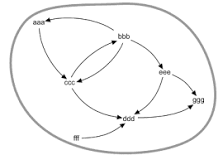What are MCDs?
Multiple Cause Diagrams (MCDs) are a type of diagrammatic representation used to visualise and understand complex systems. They are particularly useful in identifying and illustrating the multiple causes that contribute to a particular effect or outcome. MCDs are often used in various fields such as business, health, and politics to analyse complex situations, identify key factors, and develop strategic solutions.
MCDs for Business and How They Work
In the business realm, MCDs are used to map out the various factors that can influence a particular business outcome. For instance, if a company is experiencing a decline in sales, an MCD can be used to identify the multiple causes contributing to this effect. These could include factors like increased competition, changes in consumer behaviour, or internal issues such as poor product quality or ineffective marketing strategies.
By mapping out these causes on an MCD, businesses can gain a clearer understanding of the situation at hand. This can then guide them in developing targeted strategies to address each cause. For example, if poor product quality is identified as a key cause of declining sales, the business might decide to invest in improving their manufacturing processes.
MCDs for Health and How They Work
In the health sector, MCDs can be used to understand the various factors contributing to health outcomes. For instance, if there is an outbreak of a particular disease, an MCD can be used to identify the multiple causes contributing to this outbreak. These could include factors like environmental conditions, population density, or public health practices.
By using an MCD to map out these causes, health professionals can gain a better understanding of the situation and develop targeted interventions. For example, if environmental conditions are identified as a key cause of disease outbreak, public health officials might decide to implement measures aimed at improving sanitation in affected areas.
MCDs for Politics and How They Work
In the political arena, MCDs can be used to understand the various factors influencing political outcomes. For instance, if a particular political party is losing support, an MCD can be used to identify the multiple causes contributing to this effect. These could include factors like changes in public sentiment, policy decisions, or leadership issues.
By mapping out these causes on an MCD, political analysts can gain a clearer understanding of the situation. This can then guide them in developing strategies to address each cause. For example, if changes in public sentiment are identified as a key cause of declining support, the political party might decide to re-evaluate their policies or communication strategies.
The guidelines for using multiple cause diagrams include:
- Begin at the factor or event to be explained and work backwards;
- the arrows should be labelled;
- it is not necessary to put blobs around phrases;
- ensure that each causal link is clear, inserting any necessary intermediate variables or factors as necessary;
Conclusion and Next Steps
In conclusion, Multiple Cause Diagrams are a powerful tool for understanding complex systems and identifying the multiple causes contributing to a particular effect. They can be applied in various fields including business, health, and politics to analyse complex situations and develop strategic solutions.
The next step after creating an MCD is to use it as a guide for action. This involves developing targeted strategies to address each identified cause. It’s also important to regularly review and update the MCD as new information becomes available or as the situation evolves.
Remember that while MCDs can provide valuable insights, they are just one tool in your analytical toolbox. They should be used in conjunction with other tools and methods for a comprehensive understanding of complex systems.
